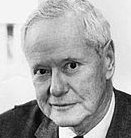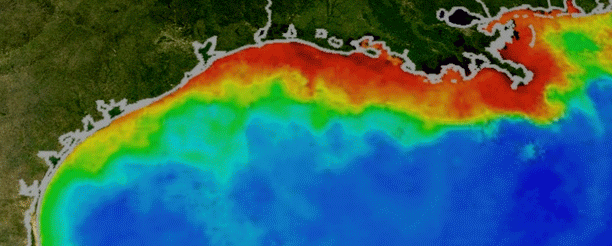---------------------------------------------------------------------------Stuart L Hart is a leading authority on the implications of environment and poverty for business strategy. He is the founder of Enterprise for a Sustainable World,www.e4sw.org. This blog is shared with permission from Voice of the Planet. ---------------------------------------------------------------------------
My colleagues Amory and Hunter Lovins tell a wonderful parable: In the early 1950s, the Dayak people in Borneo experienced an outbreak of malaria. To combat this terrible problem, The World Health Organization sprayed large amounts of DDT to kill the mosquitoes carrying the disease. As expected, the mosquitoes died and the malaria declined. Problem solved.
But wait--there were unexpected side effects: The roofs on peoples' houses began to cave in. It seems that the DDT was killing the parasitic wasp that previously controlled the thatch-eating caterpillars. Even worse, these DDT-poisoned insects were eaten by geckoes, which were then eaten by cats. The cats died, allowing the rat population to explode, exposing the local people to even more vicious outbreaks of plague and typhus. To cope with these new problems, which were the result of the original solution, the WHO was obliged to parachute 14,000 live cats into Borneo...
 This parable illustrates one of the most difficult challenges facing the initiators of any purposeful human action: That any new solution or innovation will always create new problems. Sociologist Robert K. Merton identified this phenomenon in the 1930s as the "Law of Unintended Consequences." While unintended consequences can be positive (e.g. taking aspirin for pain also appears to reduce the risk of heart attack), it is the negative ones that necessarily concern us the most--precisely because they are unforeseen!
This parable illustrates one of the most difficult challenges facing the initiators of any purposeful human action: That any new solution or innovation will always create new problems. Sociologist Robert K. Merton identified this phenomenon in the 1930s as the "Law of Unintended Consequences." While unintended consequences can be positive (e.g. taking aspirin for pain also appears to reduce the risk of heart attack), it is the negative ones that necessarily concern us the most--precisely because they are unforeseen!Thus, a key criterion for determining if a given human endeavor is "sustainable" (or not) is whether or not the problems it solves are more significant than the new problems it creates. Tragically, many of our most notable technological and industrial innovations of the past century do not appear to have passed this test.
Take, for example, Fritz Haber's invention of synthetic nitrogen in 1909. Until Haber figured out how to "fix" nitrogen from the atmosphere into a form useful to living things (i.e. plants), all the useable nitrogen on earth was fixed by soil bacteria living on the roots of leguminous plants. Before Haber's invention of synthetic fertilizer, the amount of life earth could support--crops and humans, for example--was limited by the amount of nitrogen fixed by natural processes.
 But as Michael Pollan points out in his wonderful book, The Omnivore's Dilemma, having acquired the power to fix nitrogen, humankind was now liberated from biological constraints. This enabled the creation of "modern" industrial agriculture--monoculture crops fed with massive quantities of chemical fertilizers and pesticides manufactured from fossil fuel. Some estimate that two out of every five humans on earth today would not be alive if not for synthetic nitrogen. This has clearly been a tremendous boon to humanity, to say the least. But wait, there were unexpected consequences...
But as Michael Pollan points out in his wonderful book, The Omnivore's Dilemma, having acquired the power to fix nitrogen, humankind was now liberated from biological constraints. This enabled the creation of "modern" industrial agriculture--monoculture crops fed with massive quantities of chemical fertilizers and pesticides manufactured from fossil fuel. Some estimate that two out of every five humans on earth today would not be alive if not for synthetic nitrogen. This has clearly been a tremendous boon to humanity, to say the least. But wait, there were unexpected consequences...Today, it takes more than a calorie of fossil fuel energy to produce a calorie of food.
In fact, industrial agriculture accounts for nearly one-quarter of all greenhouse gas emissions to the atmosphere. In addition, most of the synthetic fertilizer applied to crops is wasted--it either evaporates into the atmosphere (acidifying the rain, and further contributing to climate change), or it runs off into streams, ultimately ending up in estuaries like the Gulf of Mexico, where it stimulates wild growth of algae that then dies and smothers marine life, creating "dead zones," and adversely impacting coral reefs and other fragile life forms critical to marine fisheries and ecosystems.

Haber's process for manufacturing synthetic nitrogen is also what enabled less humanitarian industrialists to create the industrial munitions for modern warfare and terrorism--high explosives, defoliants, and poison gases. Might it be that the new problems created turn out to be bigger than the problems solved?
Or take the case of nuclear power. In the years following the Second World War (which was ended with the use of nuclear weapons), nuclear power was hailed as the solution to our future energy problems. "Electricity too cheap to meter" was the slogan in those days. Throughout the 1960s and 70s, the world pursued nuclear power with great vigor. Until the accidents at Three Mile Island and Chernobyl put the brakes on.
But these accidents only exposed part of the "new" problem--the potentially devastating consequences of a nuclear meltdown. With the increased scrutiny these accidents brought, it also became clear that there really was no long-term, permanent, or safe way to manage the waste from spent fuel rods. So, today we continue to store the material above ground in growing numbers of radioactive pools, which are potentially vulnerable to terrorist attack. Even worse, the failure to secure all existing nuclear weapons presents the real danger that "loose nukes" will fall into the wrong hands, with potentially horrific consequences.
In recent years, the growing specter of climate change has brought nuclear power back to the forefront, since it produces no greenhouse gas emissions. And then came the earthquake and tsunami in Japan and theFukushima disaster. In June, at the Tokyo Power Board Meeting, livid shareholders told the executives at the utility to "jump into the reactor and die."
Might it be that the new problems created turn out to be bigger than the problems solved?
In the years ahead, we will face unprecedented challenges to design and develop "sustainable" solutions to our growing food, energy, water, and other problems.Of necessity, we will be forced to take action before we completely understand all of the unintended consequences. The "precautionary principal" dictates that we pursue only those solutions that minimize the potential for massive negative unanticipated consequences.
Experience over the past century teaches us that large-scale, centralized solutions typically fail the test for unanticipated consequences--most end up creating bigger problems than they solve. Better instead to pursue the emerging wave of small-scale, distributed, point-of-use solutions such as distributed generation of renewable energy, point-of-use water treatment, and multi-crop agriculture. Such solutions can "fail small and learn big," enabling technologists and entrepreneurs to fine-tune and perfect the model on a small scale before seeking wider application. In so doing, we can finally begin to create smaller problems...and begin the transformation to a sustainable world.


No comments:
Post a Comment